WESTERN CANADA BASEBALL
aka Saskatchewan Baseball League
aka Canadian-American Baseball League
aka Northern Saskatchewan Baseball League
aka Western Baseball League
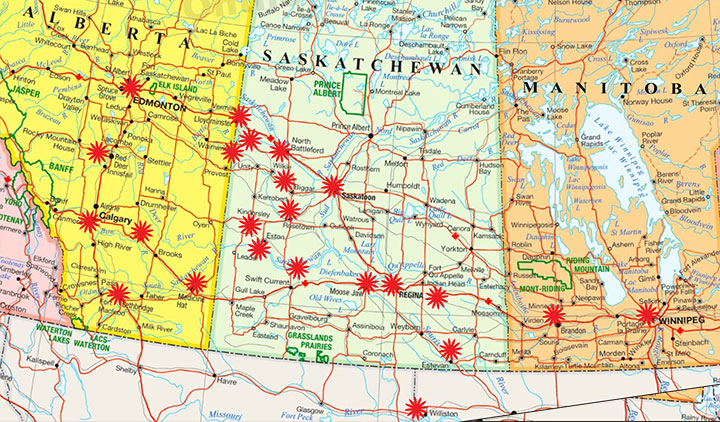
What began as a three or four page web site back in the mid 1990s on baseball in a small prairie town for a few years in the 1950s and 1960s has evolved into a (at last count) 2,700 page opus on semi-professional and amateur baseball across Canada (mainly the West) and into the northern USA from 1900 through the 1970s.
There's even coverage of the first professional ball in Western Canada, the WCBL of 1907 to 1921.
Hard to believe - there was a time before television, before Elvis (the Beatles and the Rolling Stones), Nintendo, "One giant leap for mankind", personal computers, disposable diapers, pantyhose, Harry Potter and Facebook.
This history project began with a focus on the fifties, when my hometown of Lloydminster (straddling the Alberta-Saskatchewan boundary line) began a memorable adventure into semi-professional baseball. It didn't last long, ten years at most, but left an indelible impression.
This was a time when Brooklyn had a major league team and California had none. A movie cost a dime. In fact, you could buy useful things with coins. A pack of baseball cards, for example, cost a nickel (five cards AND bubble gum). "Slick Willie" was the megastar centrefielder for the New York Giants, not the President of the United States. A cell phone was likely what prison inmates used. The Rocket was a hockey player. To be cool, meant something about the temperature not your attitude. Sports writers wore hats. Not caps. Fedoras. A 4 x 4 was a sturdy piece of wood. The top stars might have received a fabulous salary of $100,000 for a season. Only two teams made the baseball playoffs. There was just one round -- the World Series!
Oh they were tough times. Walking barefoot to school through the snow drifts. Minus thirty. And, in those days it was Fahrenheit. 20 miles to school, 20 miles home. Uphill both ways. And, did I mention I also had to carry the horse AND pull the plow?
Outside of Lloydminster (inside, not much seemed to happen) they were tumultuous times (from the beginning of space exploration to the start of rock 'n rock).
At R.H. Phillips Co. Ltd. you could pick up a pair of faded blue jeans for $2.95. At the Co-op, a Davey Crockett hat "made with simulated fur in the authentic style" sold for 89-cents.
Lloydminster, a tiny farming / oil community, might have had four or five thousand residents at the time. The provincial boundary, astride the 4th meridian, split the town -- Alberta on one side, Saskatchewan on the other. Thus, the team name of "Meridians".
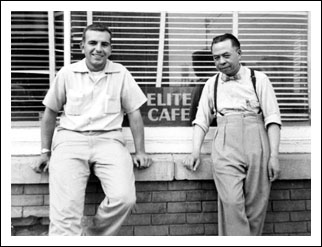 The town had a history of tournament ball but, with the 1954 entry into the Saskatchewan Baseball League, we finally had a team we could call our own.
The town had a history of tournament ball but, with the 1954 entry into the Saskatchewan Baseball League, we finally had a team we could call our own.
We likely called it a lot of things that first year as the Meridians finished dead last. But, it was the beginning, for me, of a lifelong attraction to baseball. It didn't hurt that most of the players hung out at dad's restaurant (that's my dad, Jimmy Mah, on the right with 1955 first baseman Bob Bayless).
I signed up for a couple of stints as batboy for the club. Then, a progression to baseball reporter for the local paper. Statistician. PR guy. More than 40 years later, it was time to begin leafing through boxes of newspaper clippings, scrapbooks and odds and ends and searching the microfilm to honour some special people who made such a a lasting mark on a kid from the prairies.
From the onset, this was intended as a work in progress. One of the main attractions of the web presentation is flexibility -- as more material becomes available it's relatively easy to fit it in. It may have begun with a narrow focus on Lloydminster and its leagues but, as you will note, it expanded to include teams from across the west, to the east and the Maritimes and even into the Dakotas and South Minny. The time frame gradually expanded so that the core material covered the period from the early 1900s through to the 1970s, including the end of the WCBL, the Northern Saskatchewan League, the Southern League and the Basin League of the Dakotas.
So many have provided so much to Western Canada Baseball. To list them all would add dozens more pages. But, from the onset former players Jack Altman and Jim Lester were key to providing coverage of leagues in Southern Alberta. Tom Mulcahy was generous with material for Lloydminster, as was Roy Taylor for his stops in Kamsack, Saskatoon and Moose Jaw. A scrapbook and photos from John Noce provided detail on the California Mohawks, then setting up in Medicine Hat for the season.
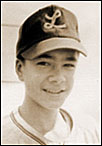 Along the way, Barry Swanton (author of a book on the ManDak League) and I have written a book (Black Baseball Players in Canada) and had the opportunity to meet and get reacquainted with some great people.
Along the way, Barry Swanton (author of a book on the ManDak League) and I have written a book (Black Baseball Players in Canada) and had the opportunity to meet and get reacquainted with some great people.
In April of 2007, Rich Necker of Regina, a former batboy for the Florida Cubans, playing in Saskatchewan in 1952, was in contact trying to track down a better copy of a Cubans' team photo of that season. That turned out to be an incredibly lucky and rewarding association as Rich became integral to the success of the site with marvelous research finds and ideas on presentation. I hate to think what this would have been without his enormous contributions.
In August, 2010, I was deeply honoured to be inducted into the Saskatchewan Baseball Hall of Fame. A major surprise followed in the winter of 2010 -- selection in the Top 100 Most Influential Canadians in Baseball. It's been quite a ride !
If you have any material, or leads on the whereabouts of material, I'd be grateful if you would drop me a line or two ![]() .
.
(Harvey) Jay-Dell Mah, Box #952, 909 4th Street NW, Nakusp, BC, Canada, V0G 1R0
There Used to Be a Ballpark Right Here
And there used to be a ballpark
Where the field was warm and green
And the people played their crazy game
With a joy I'd never seen.
And the air was such a wonder
From the hot dogs and the beer
Yes, there used a ballpark, right here.
. . .
Now the children try to find it
And they can't believe their eyes
`Cause the old team just isn't playing
And the new team hardly tries
And the sky has got so cloudy
When it used to be so clear
And the summer went so quickly this year.Yes, there used to be a ballpark, right here.
[Frank Sinatra, written by Joe Raposo]
The ol' ballyard (Saskatchewan side of town, east of the high school grounds, make a left and follow the dust) and the team itself have long disappeared. But, little did they know. Those ball teams that camped out at Legion Sportsman's Park in the '50s would, nearly a half century later, still spark memories of good times.
"I had heard some great stories about the fields, so we had expected to find some pretty primitive playing fields, which we did. I broke a foot playing, not knowing how I did it ... stepped in a hole or on a rock ... In the outfield there would be clumps of grass some as high as your knees, and bare spots ... not always level. In Vulcan at the second ballpark, in the rightfield corner you were looking up over a hill and couldn't see the whole batter, just the upper part of his body. It was interesting." Greg Seastrom on playing in Vulcan in the 50s.
The semi-pro circuit was a training ground for many who went on to successful careers in the majors -- Ron Fairly, Ron Perranoski, Pat Gillick, Tom Haller, Don Buford, Jerry Adair. All-Americans there were many. Lots of California college kids (see the College Connection). It seemed Edmonton and/or Williston imported the whole USC team (one year when Edmonton met Williston thirteen USC players suited up).
But, by large measure, Lloydminster's stars, at least in the early years, were not college kids on the way to the majors. Sportsman's Park was home to memorable summer guests as Willie "Curly" Williams, Modie Risher and Benjamin Lott. Thwarted by baseball's colour barrier, then left with dwindling opportunities with the decline of the Negro Leagues they found a home across the border. After a taste of the minors, hopes for something better. A little summer fun. Some cash. Perhaps, some respect.
Johnny Ford and Cliff Pemberton, two of the league's enduring stars, each spent time with the Meridians and while Roy Taylor wasn't a Meridian, he was a pioneer in the influx of college players to the prairies, first with the California Mohawks barnstorming college kids, then in Kamsack, Moose Jaw and Saskatoon.
Overall, there were some outstanding success stories from the Western Canada Baseball League -- such as Modie Risher, a hero in his hometown, Pete Beiden, Bob Bennett, and Al Endriss, who became Hall of Fame college coaches, Jim Garrett, Jim Hansen and Mike Noakes who became celebrated high school mentors, and Steve Schott who went on to become the owner of the major league Oakland A's. Along with the mountains, some deep valleys -- the tragedy of Bruce Gardner.
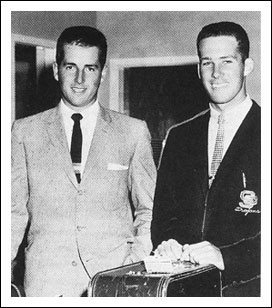 Pitchers Bruce Gardner (right) and Pat Gillick, again from the University of Southern California, arrive in Edmonton for the start of the 1958 season.
Pitchers Bruce Gardner (right) and Pat Gillick, again from the University of Southern California, arrive in Edmonton for the start of the 1958 season.
Gillick would have arm trouble and leave the team early in the season. Gardner, who played with Edmonton in 1958 and Regina in 1959, would go on to an All-American career at USC.
In June, 1958 he pitched USC to the US College baseball title. He was 40-5 over his college career (still holds the record for most wins in a season -- 18), but never achieved his dream to be a major leaguer.
In 1971, his body was found near the mound at the USC baseball field. A Smith & Wesson .38 was in his hand. A suicide note was nearby. The Gardner story is told in "An American Tragedy" by Ira Berkow and Murray Olderman.
Gillick would pitch for a couple of years with Vulcan and Granum in Southern Alberta before success in the minor leagues and, subsequently, a long and successful career in the head office, including stints with the Toronto Blue Jays, Baltimore Orioles, Seattle Mariners and Philadelphia Phillies. (Photo, The Rajah of Renfrew, Brant E. Ducey)
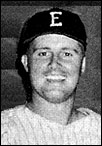
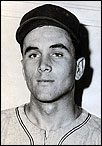 18-year-old Ron Fairly (left), Edmonton Eskimos 1957 (a year before his major league debut with the Los Angeles Dodgers). A 21 year major league career. All Fairly did in '57 was hit .388 (third in the league) with an OBA of .447 and SLG of .702.
18-year-old Ron Fairly (left), Edmonton Eskimos 1957 (a year before his major league debut with the Los Angeles Dodgers). A 21 year major league career. All Fairly did in '57 was hit .388 (third in the league) with an OBA of .447 and SLG of .702.
As a 19-year-old, Ron Perranoski (right) pitched for the Lloydminster Meridians at the end of the 1956 season (after completing a tour of duty with Watertown of the Basin League in South Dakota). In his first playoff start, Perranoski struck out 15 in a complete game victory against Edmonton. Originally signed by the Cubs, Perranoski came up with the Los Angeles Dodgers in 1961 to begin a 13 year major league playing career.
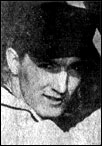
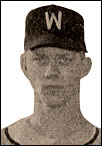 Catcher Tom Haller (left) was 20 when he starred for the Moose Jaw Mallards in 1957. It was just two years before his major league debut with the San Francisco Giants. 12-year major league career. Haller batted .300 in '57. His 15 homers tied him for 2nd place in the Western Canada Baseball League.
Catcher Tom Haller (left) was 20 when he starred for the Moose Jaw Mallards in 1957. It was just two years before his major league debut with the San Francisco Giants. 12-year major league career. Haller batted .300 in '57. His 15 homers tied him for 2nd place in the Western Canada Baseball League.
Shortstop Jerry Adair (right) of the Williston Oilers hit .409 in 1958 to win the batting crown. The 21-year-old defensive star also tied for the league lead in home runs with 10. On the mound -- three starts, three complete game victories, a 2.67 ERA. He went right from the Western Canada League playoffs to the big leagues! Adair helped Williston wrap up the Can-Am title on August 30th, 1958. Made his debut with Baltimore on September 2nd, 1958 -- the beginning of a 13-year major league career which included several fielding records.
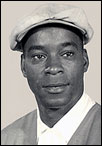
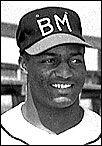 Benjamin Lott, (left) Lloydminster, 1956-57. "Honey" Lott. Probably, because of that sweet swing. Outstanding second baseman who hit for both average and power. Came to the Meridians after stints in the Negro Leagues, professional ball and the ManDak League. Stylish both on and off the field.
Benjamin Lott, (left) Lloydminster, 1956-57. "Honey" Lott. Probably, because of that sweet swing. Outstanding second baseman who hit for both average and power. Came to the Meridians after stints in the Negro Leagues, professional ball and the ManDak League. Stylish both on and off the field.
Outfielder Don Buford (right) was a key member of the 1959 Lloydminster-North Battleford Combines (and, for the playoff final, the Edmonton Eskimos). Buford hit .284 and, while he didn't join the league until the first week of July, Buford, led the league in stolen bases with 19, and in triples with 11. Buford made his major league debut in 1963 with the Chicago White Sox. He played in the majors for 10 years and continued in the game as a scout, coach and manager.
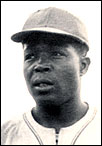 Willie Curly Williams Lloydminster 1955-1963.
Willie Curly Williams Lloydminster 1955-1963.
For nearly a decade, one of the best and most popular players in the WCBL. Came to the Meridians after stints in the Negro League, pro ball and the ManDak loop.
In 1997, the Sarasota, Florida Council declared "Curly Williams Day" in honour of his efforts to raise funds to provide college scholarships for needy students. Nearly 60 years after he began his baseball career with chum Modie Risher (on the Lakeland Tigers and Jacksonville Eagles) the two remained close friends
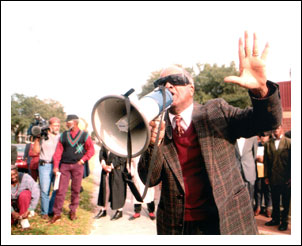
 Modie L. Risher, Lloydminster, 1957. A saluted high school educator in Charleston, SC.
Modie L. Risher, Lloydminster, 1957. A saluted high school educator in Charleston, SC.
Click the link to read Risher articles from The Post and Courier in Charleston. Risher (right) still raising hell in Charleston, South Carolina to help the disadvantaged. (Photo : Charleston Post and Courier)
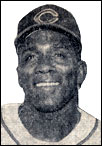 Len Tucker, (right) Came from Fresno State University to play three seasons in Canada - Kamsack, 1952, Saskatoon 1957, Lethbridge, 1961. In the 1957 season, Tucker hit .394 and led the league in home runs, with 18, runs batted in, 68, and stole 17 bases, just one behind the leader.
Len Tucker, (right) Came from Fresno State University to play three seasons in Canada - Kamsack, 1952, Saskatoon 1957, Lethbridge, 1961. In the 1957 season, Tucker hit .394 and led the league in home runs, with 18, runs batted in, 68, and stole 17 bases, just one behind the leader.
Tucker's minor league career included one for the books -- 1956, Pampa, Texas .404, 181 runs, 228 hits, 40 doubles, 13 triples, 51 home runs, 181 batted in, 47 stolen bases. In January, 2000 Tucker was recognized as one of the all-time great Minor League sluggers. An article in SABR's Baseball Research Journal cited Tucker as the top slugger of 1956 (.791 SLG). (SABR : Society for American Baseball Research)
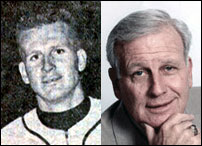
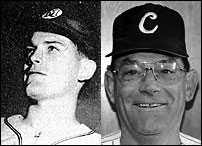 Steve Schott (Left: 1959 and 2005) Former co-owner of the Oakland A's. A pitcher with the Lethbridge White Sox of the Southern Alberta League in 1959. Bellarmine High School in San Jose (all-city in his junior and senior seasons), Santa Clara University. A major developer in Santa Clara (Citation Homes). Santa Clara's baseball stadium named after him.
Steve Schott (Left: 1959 and 2005) Former co-owner of the Oakland A's. A pitcher with the Lethbridge White Sox of the Southern Alberta League in 1959. Bellarmine High School in San Jose (all-city in his junior and senior seasons), Santa Clara University. A major developer in Santa Clara (Citation Homes). Santa Clara's baseball stadium named after him.
Bob Milano (Right: 1960 and 1997) Lloydminster, 1960. From the University of California at Berkeley. Became the head coach at Cal In 1978 and stayed on for 22 years. Milano led the Bears to a Pac-10 Southern Division title, three College World Series appearances and six NCAA Regionals. He's also served as assistant athletic director at Cal, a member of the NCAA Division I Baseball Committee, an assistant coach for the United States Olympic Team and the head coach for the USA National Team. More wins than any other coach in Cal history.
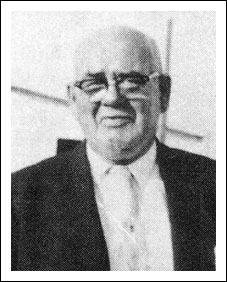
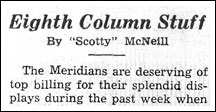 Scotty McNeill was a fixture at my dad's restaurant and on the Lloydminster sporting scene. He worked at the provincial liquor store on the Alberta side of the town and seemed to know just about everyone in the community.
Scotty McNeill was a fixture at my dad's restaurant and on the Lloydminster sporting scene. He worked at the provincial liquor store on the Alberta side of the town and seemed to know just about everyone in the community.
A robust, jovial man who noted the Meridians' exploits in the local weekly, The Lloydminster Times.
He was a mentor who convinced my parents it would be just fine for the kid to go on the road with the team. Scotty was probably the one who steered me toward a career in broadcasting (and, most likely the one responsible for getting the Times to publish my own baseball columns while barely a teenager).
Scotty was an easy mark for all my fund-raising activities through the school years and for fund-raising efforts by all the sporting teams in the town. In 1956, Scotty -- who had never owned an automobile -- was the winner of a league draw for a car. Of course, he promptly gave the car back to the ball club which then realized an even bigger financial haul from the promotion. Typical Scotty. When I returned to Lloydminster in 2009 for a high school reunion, one of the first stops was at the cemetery to visit my dad's grave site and, just a few feet away, Donald "Scotty" McNeill. (Photo - 75 Years of Sport & Culture in Lloydminster; Headline - Lloydminster Times) 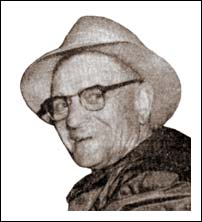
The ads in The Lloydminster Times said W.A. Thorpe Real Estate. Walter something, I think.
But, he was just "Slim", Slim Thorpe to everyone.
A tireless worker for baseball in Lloydminster. Arch rival of Edmonton's Mr. Baseball, John Ducey. The lowly Meridians took particular delight in defeating their big city neighbours.
And ... the hat. Always, well almost always, the hat.
